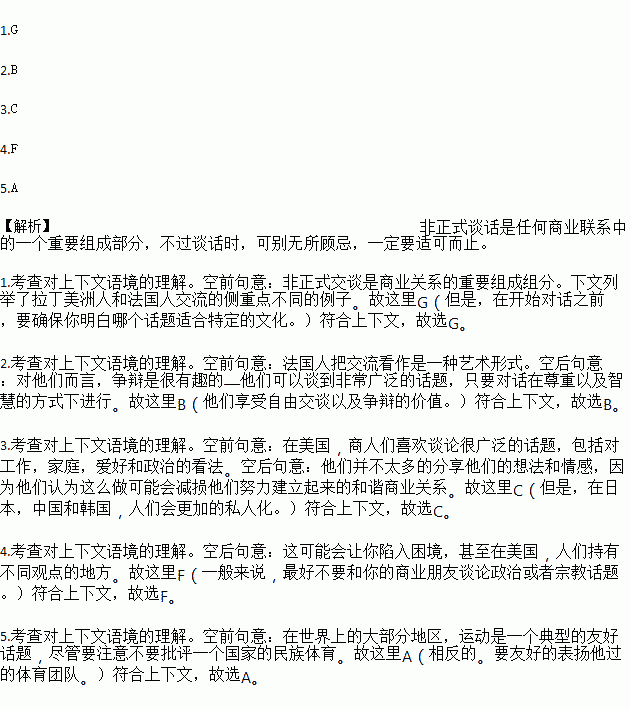题目内容
Informal conversation is an important part of any business relationship. 1.Latin Americans enjoy sharing information about their local history, art, and customs. They expect questions about their family and are sure to show pictures of their children. The French think of conversation as an art form. 2.For them, arguments can be interesting — and they can cover pretty much or any topic — as long as they occur in a respectful and intelligent manner.
In the United States, business people like to discuss a wide range of topics, including opinions about work, family, hobbies and politics. 3.They do not share much about their thoughts, feelings or emotions because they feel that doing so might take away from the harmonious business relationship they’re trying to build. Middle Easterners are also private about their personal lives and family matters. It is considered rude, for example, to ask a businessman from Saudi Arabia about his wife or children.
4.This can get you into trouble, even in the United States, where people hold different views. Sports is typically a friendly subject in most parts of the world, although be careful not to criticize a national sport. 5.
A. Instead, be friendly and praise your host’s team.
B. They enjoy the value of lively discussions as well as disagreements.
C. In Japan, China and Korea, however, people are much more private.
D. In addition, discussing one’s salary is usually considered unsuitable.
E. You may feel free to ask your Latin American friends similar questions.
F. As a general rule, it’s best not to talk about politics or religion with your business friends.
G. Before you start a discussion, however, make sure you understand which topics are suitable in a particular culture.
 期末好成绩系列答案
期末好成绩系列答案 99加1领先期末特训卷系列答案
99加1领先期末特训卷系列答案 百强名校期末冲刺100分系列答案
百强名校期末冲刺100分系列答案 好成绩1加1期末冲刺100分系列答案
好成绩1加1期末冲刺100分系列答案 金状元绩优好卷系列答案
金状元绩优好卷系列答案
